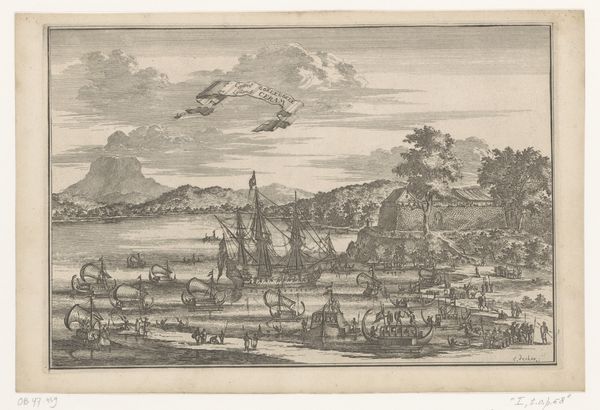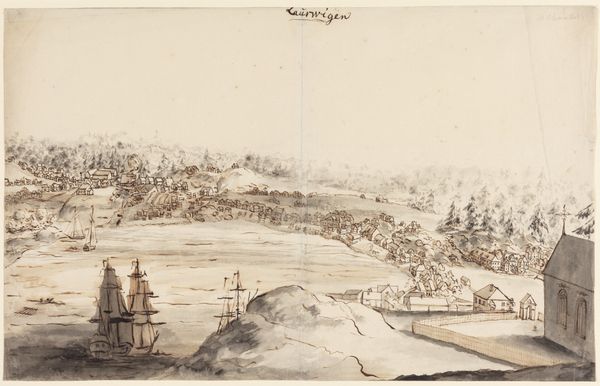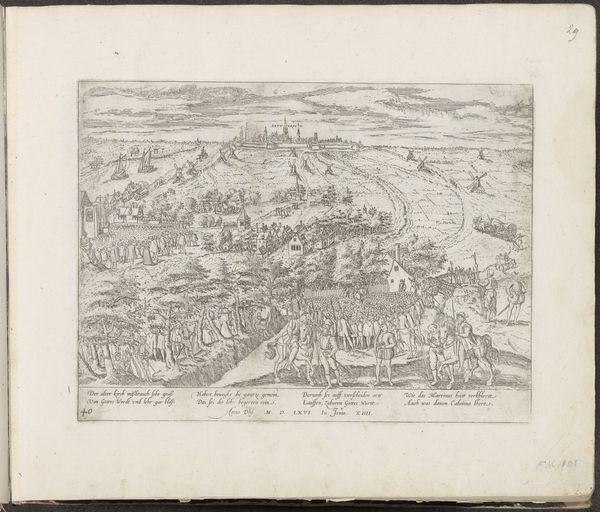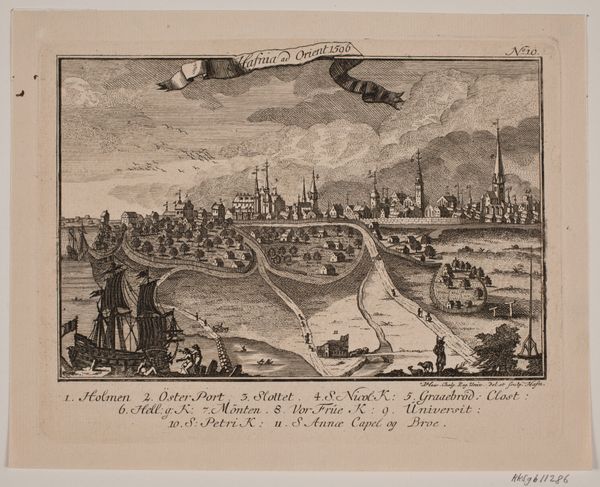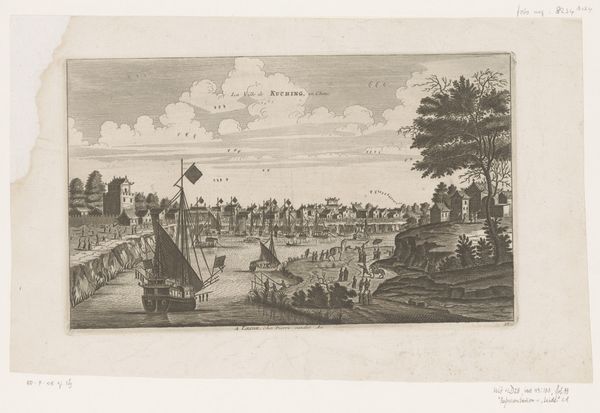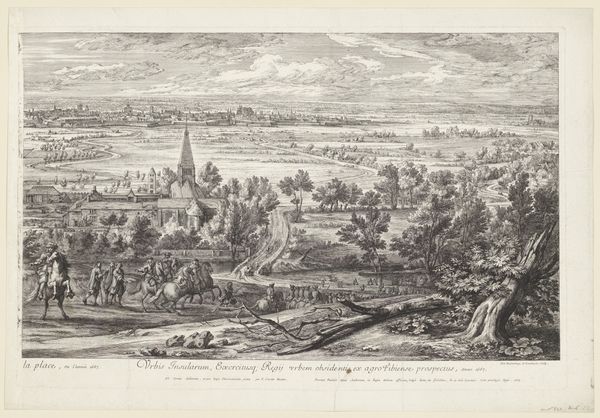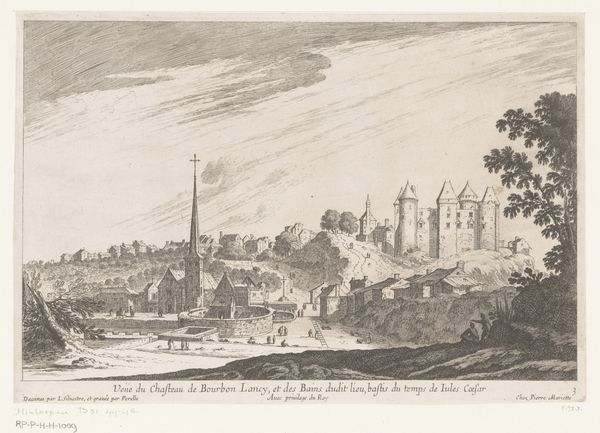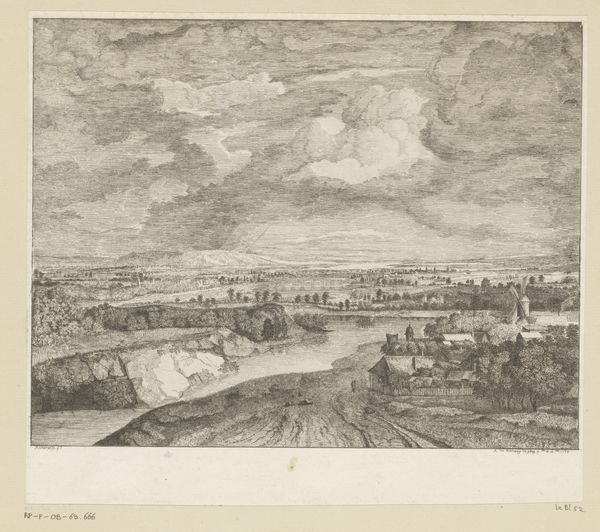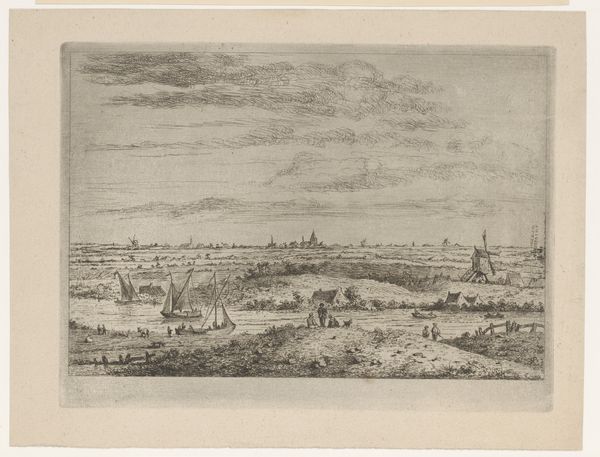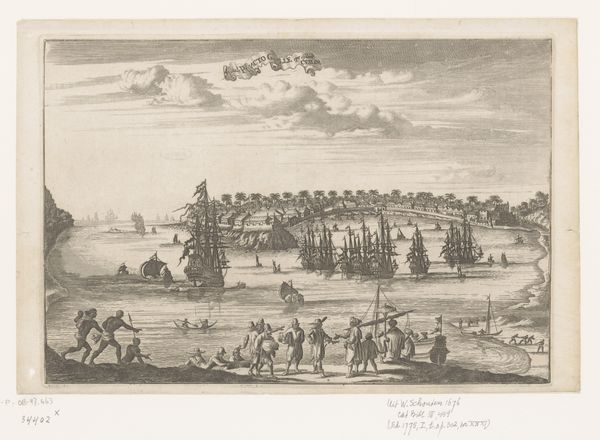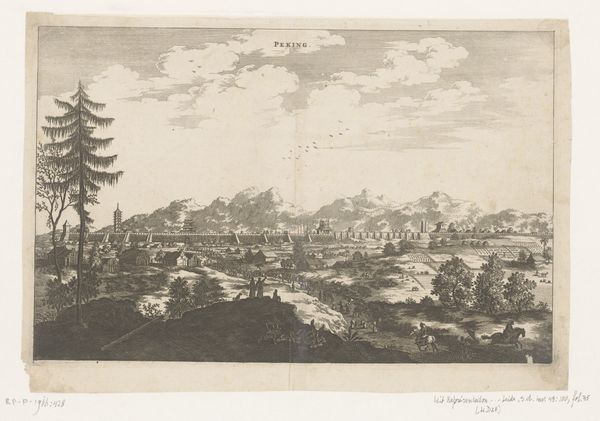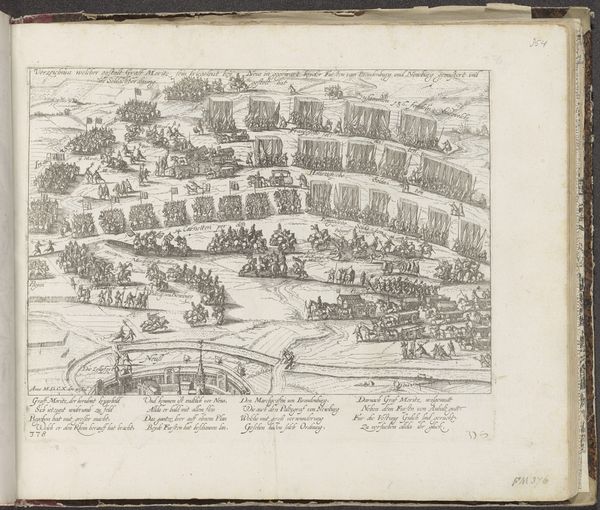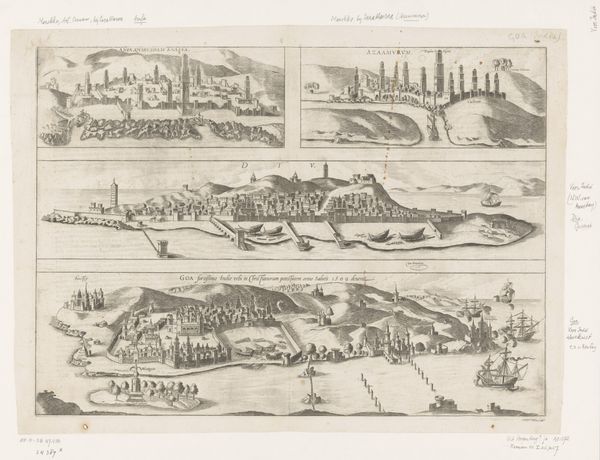
print, engraving
#
baroque
#
dutch-golden-age
# print
#
landscape
#
cityscape
#
history-painting
#
engraving
Dimensions: height 198 mm, width 291 mm
Copyright: Rijks Museum: Open Domain
Curator: Let's discuss "The Conquest of Makassar," a 1676 engraving by Coenraet Decker, currently held in the Rijksmuseum collection. My first impression is one of almost overwhelming detail. The density of information is really something. Editor: Yes, quite busy. A dense layering of detail and tone certainly characterises the engraving. How do you see Decker manipulating that intricacy? Curator: He utilizes a remarkably fine line to create a palpable sense of depth, dividing the composition into distinct layers. From the foreground filled with imposing ships, the eye journeys back to the distant cityscape nestled beneath a dormant volcano. It’s quite a feat of spatial organisation, wouldn't you say? Editor: Undeniably skilled, but it also served a precise function. Consider the historical context: the Dutch East India Company sought to project its power, depicting military successes in distant lands to bolster their image and attract investment back home. It’s not just an image of conquest but a carefully crafted advertisement for colonial might. Curator: A valid point. The work undoubtedly celebrates Dutch colonial expansion, yet on a formal level, observe how the dramatic play of light and shadow adds to the visual dynamism. Decker contrasts the ordered, meticulously rendered ships with the more chaotic depiction of the burning cityscape. Editor: That visual tension mirrors the real conflict, albeit filtered through a Eurocentric lens. While we analyze the composition and artistic technique, it’s vital to remember the immense human cost of this ‘conquest’ for the people of Makassar. These depictions of power had devastating real-world consequences. Curator: Precisely, and to consider the artistic strategies used to perpetuate particular narratives, we see how the objective image it tries to convey falls apart with a contemporary view point. A layered artwork both textually and visually. Editor: A perfect illustration of how historical context reshapes our aesthetic experience, wouldn't you agree?
Comments
No comments
Be the first to comment and join the conversation on the ultimate creative platform.
